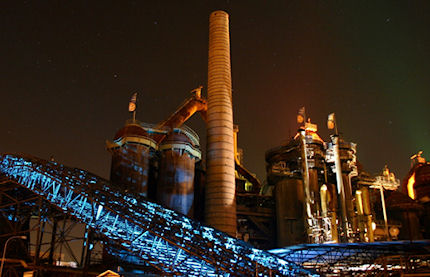Importance to Industry

Recovering waste heat strengthens the U.S. industrial base by giving plants and
additional source of savings and/or revenue (Photo: Markus Biehal)
The U.S. industrial sector accounts for approximately one third of all energy used in the United States, consuming approximately 32 quadrillion Btu (10x15 Btu) of energy annually and emitting about 1,680 million metric tons of carbon dioxide associated with this energy use.
Efforts to improve industrial energy efficiency typically focus on reducing the energy consumed by the equipment used in manufacturing (e.g., boilers, furnaces, dryers, reactors, separators, motors, and pumps) or changing the processes or techniques to manufacture products.
A valuable alternative approach (or supplemental approach) to improving overall energy efficiency is to capture and reuse the lost or "waste heat" that is intrinsic to all industrial manufacturing. During these manufacturing processes, as much as 20-50% of the energy consumed is ultimately lost via waste heat. In some cases, such as industrial furnaces, efficiency improvements resulting from waste heat recovery can improve energy efficiency by 10% to as much as 50%.
As the industrial sector continues efforts to improve its energy efficiency, recovering waste heat losses provides an attractive opportunity for an emission-free and less costly energy resource. Numerous technologies and variations/combinations of technologies are commercially available for waste heat recovery. Many industrial facilities have upgraded or are improving their energy productivity by installing these technologies.
Energy efficiency improvements such as waste heat recovery go straight to each industrial plant's bottom line, thus strengthening our region's industrial base, preserving industrial jobs, and improving each plant's competitiveness on the world stage.